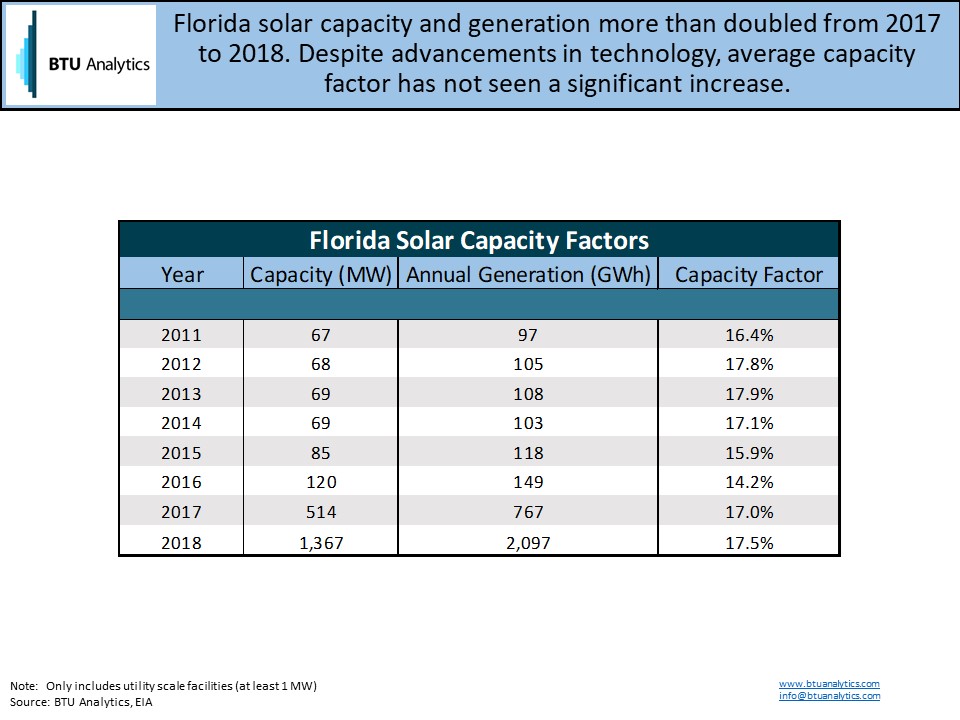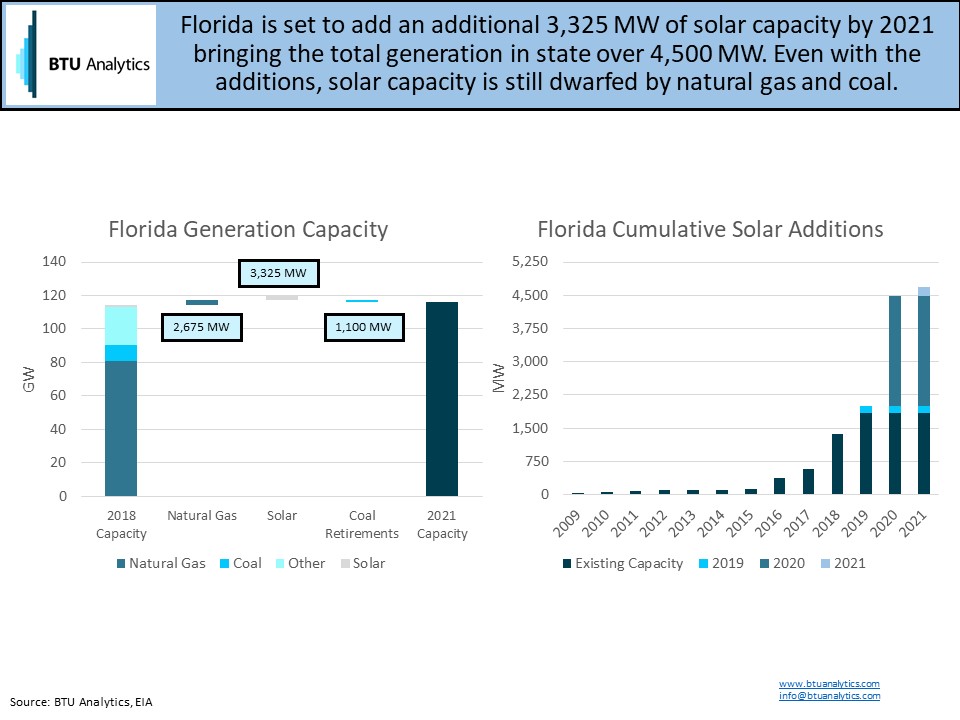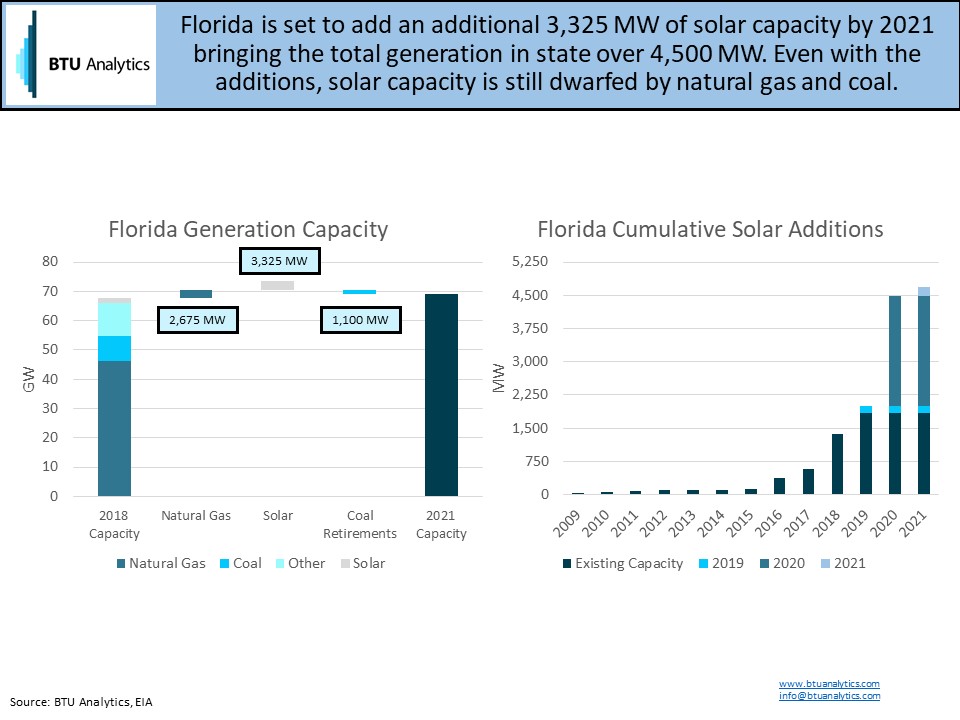Earlier this month, BTU Analytics looked at the rise of natural gas in Florida at the expense of coal. Now, utilities are beginning the development of a new wave of infrastructure focused on solar and batteries. With coal generation on the decline, solar will fight for market share with natural gas in the Florida power generation market. In this Energy Market Commentary, we examine the ability of Florida solar power generation to displace the remaining coal market share and if solar can begin to encroach on natural gas generation.
Solar has the lowest capacity factor among major energy sources in the US. BTU estimates that utility scale solar PV plants (capacity greater than 1 MW) had a capacity factor of just 17% which comes in far below coal and natural gas at 44% and 33% respectively. Florida solar capacity factors over time are detailed in the table below. In the past seven years, Florida capacity factors have been consistently between 14 – 18%. As technology improves and more efficient plants come online, that capacity factor is expected to grow. However, there is a natural limit to capacity factors for solar facilities due to the intermittency of the resource.

As of December 2018, Florida had 1,367 MW of installed solar capacity and generated 2,097 GWh for a capacity factor of 17.5%. As we discussed in Part 1 of this series, this accounts for just 1% of generation in the state. The trend across Florida utilities continues to be an increase in renewables investments. As we detailed earlier this year since 2009 Florida has retired 3,050 MW of coal generation capacity to the benefit of natural gas generation. This leaves just nine coal plants remaining in the state for a combined capacity of 9,400 MW. By 2022, planned natural gas and solar additions could contribute 50,000 MWh/d of generation compared to just 10,000 MWh/d of coal retirements. Excess generation will likely cut further into the remaining market share of coal.

In 2018, Florida coal plants generated an average of 82,300 MWh/d. Using the average capacity factor of Florida solar plants in 2018 (17.5%), Florida would need to install over 19,600 MW of additional solar capacity to displace all coal generation with solar. With 2018 Florida solar capacity at 1,367 MW, that would represent an increase of 1,330%. Current Florida solar development through 2021 has over 3,300 MW of projects proposed (representing an increase of 240%) taking total solar capacity to over 4,500 MW. As the solar infrastructure development window tends to be 1 to 3 years, expect continued investment in solar past 2021.

Despite solar power’s small share of the generation mix, it continues to receive an outsized share of attention and investment. However, for solar to make a difference in the Florida energy market, better technology in solar and batteries will be necessary. At current levels, the ability for solar to replace coal would require a level of investment in infrastructure above what is currently planned through 2021. In the meantime, look for natural gas generation to grow at the expense of coal in the Florida power markets. To learn more about power markets and the effect of renewables’ growth on gas dynamics, request more information about our Henry Hub Outlook.








